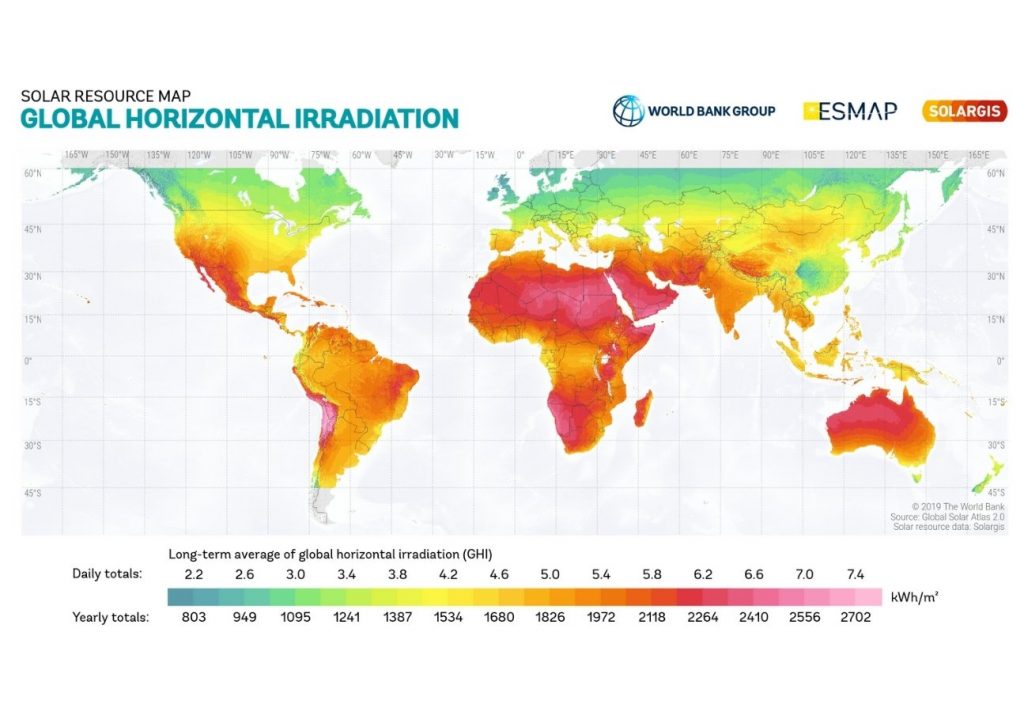Solar Calculator
Climatebiz has worked with thier in-house energy experts and developers to create a unique solar calculator which assists you in sizing the correct solar system based on your home’s location, roof direction/tilt angle, and the amount of electricity you consume each month.
Use our solar calculator below to determine the solar system size your home requires:
On average, U.S. homeowners can save about $1,500 a year by installing solar panels – $37,500 over the lifespan of a solar system. Do you want to find out how much you could save with solar? Click the button below and complete 5 simple steps to get your free personalized solar savings estimate.
Get a Free Solar Savings EstimateHow To Use Our Solar System Calculator

1. Insert your home’s ZIP code
With this information, we can determine your location’s Global Horizontal Irradiation, also known as peak sun hours. A peak sun hour equates to 1 hour in which the sun’s solar irradiance (sunlight) produces an average of 1000 W/m². Anything over 4 hours daily is considered great for solar energy production. The more peak sun hours your location has, the better equipped it is for solar panels.
2. Insert the pitch of your roof
Most roofs have a sloping pitch of between 18.4° and 36.9°. The best roof pitch angle for solar panels is between 30 – 40°. At these low angles, enough surface area of the photovoltaic cells will be exposed to the sun’s irradiation. Thus, generating sufficient amounts of solar energy.
3. Insert the direction of your roof
This input can significantly affect your solar calculator’s value outcome. If your home is located in the Northern Hemisphere, you ideally want your panels facing towards the true south, and if you are located in the Southern Hemisphere, you want your solar panels facing true North.
4. Enter your monthly electricity consumption
This metric allows our solar calculator to recommend the best solar system size to offset your energy consumption. You can find your home’s monthly kWh consumption on your utility bill.
5. Select a solar panel power rating
This allows our solar calculator to determine how many solar panels your home will need and how much space your overall solar system will require. The most common solar panel power ratings for residential installations are 370 watts, 400 watts, and 500 watts.
How Our Solar Panel Calculator Works
Solar Resource Data
Solar resource data is solar irradiance and meteorological data that describe the conditions at the location of your home’s solar system. The Climatebiz solar calculator uses hourly typical meteorological year (TMY) data from the NREL National Solar Radiation Database (NSRDB).
Module Type
Our solar calculator assumes that you install monocrystalline solar panels with a nominal efficiency of 19% and a temperature coefficient of -0.35 %/°C.
Array Type
Our solar calculator automatically assumes you are installing a fixed roof mount solar system. Most residential installations utilize this array type. At a later stage, we may include the option to select between a ground-mount, one-axis, and two-axis solar array.
System Losses
Included in our calculators model equations is the performance losses you would expect in a real solar system. The default value we use for system losses is 12% and is based on the categories below:
- Soiling: 2%
- Shading: 3%
- Snow: 0%
- Mismatch: 2%
- Wiring: 2%
- Connecting: 0.5%
- Light-Induced Degradation: 1.5%
- Nameplate Rating: 1%
Tilt Angle
Think of tilt angle as the angle from horizontal of the photovoltaic modules. For most fixed solar panel arrays, the tilt angle is the angle from horizontal of the array where 0° = horizontal and 90° = vertical. Best practices include setting the tilt angle to the latitude of the system’s location. Doing this will maximize the system’s total electrical output over the year.
Results
Upon calculation, our solar calculator displays annual and monthly energy production estimates in kilowatt-hours, along with the monthly and annual average peak sun hours (kWh/m2 per day) located in your area. It also displays the estimated roof area required for your recommended solar system.
Latest News
- What Size Inverter Do I Need To Run TV and Lights?
- How Many Tesla Powerwalls Do I Need?
- How Long Does It Take To Charge A Tesla?
- 7 Best Solar Generators For Loadshedding In South Africa
- Power Queen 12.8V 100Ah LifePO4 Battery Review
- Do Solar Lights Need Direct Sunlight?
- Enphase Vs SolarEdge (Which inverter company should you choose?)
- How Much Energy Does One Solar Panel Produce?


